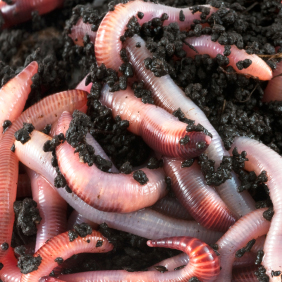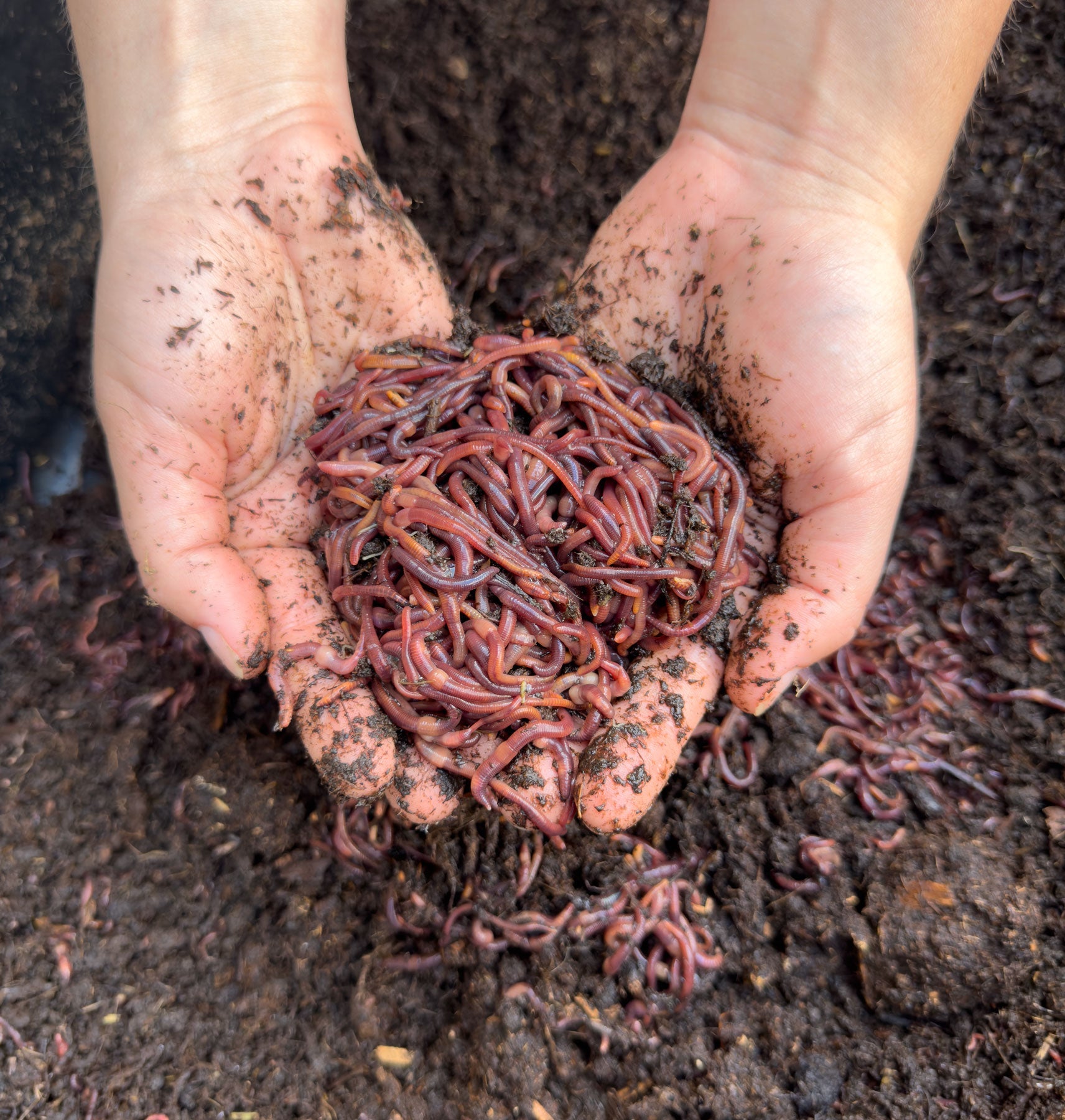Every Little Thing You Need to Know Regarding Red Wigglers for Composting
Red wigglers, or Eisenia fetida, play a crucial role in the realm of composting, changing natural waste into important soil changes. Their unique organic characteristics enable them to grow in various problems, making them an ideal selection for both newbie and experienced composters alike. Recognizing their needs and advantages is critical for developing a productive vermicomposting system. Nonetheless, the procedure of establishing a worm container and maintaining it can position obstacles. To effectively harness the potential of these worms, one must explore the intricacies of their treatment and monitoring.
What Are Red Wigglers?

(red wiggler worms for sale)
Belonging To North America, red wigglers are surface-dwelling microorganisms that prefer damp, warm habitats rich in decaying natural issue. Their diet is composed mainly of decaying plant product, food scraps, and other organic particles, which they take in and break down efficiently. As they absorb this product, they generate nutrient-rich spreadings that improve soil fertility.
Red wigglers are hermaphroditic, possessing both male and women reproductive body organs, and can duplicate swiftly under optimum conditions. This ability makes them a suitable choice for composting systems, as their population can raise swiftly. Their strength and adaptability to numerous environments additionally strengthen their relevance in lasting waste monitoring techniques. Generally, red wigglers are essential contributors to the procedure of reusing organic waste right into beneficial garden compost.
Benefits of Using Red Wigglers
Utilizing red wigglers in composting systems supplies countless advantages that enhance both the efficiency of waste monitoring and the high quality of the resulting compost. These worms, medically called Eisenia fetida, are specifically effective at breaking down natural matter, turning kitchen area scraps and backyard waste into nutrient-rich garden compost at an increased price.
One of the key advantages of using red wigglers is their capacity to consume big amounts of natural material, typically refining their weight in food waste daily. This high intake price causes faster decomposition and decreases the quantity of waste sent out to land fills. Furthermore, the castings created by red wigglers are abundant in crucial nutrients, beneficial microorganisms, and enzymes, making them an outstanding fertilizer for gardens and plants.
Furthermore, red wigglers thrive in a variety of environments, making them versatile for both interior and exterior composting systems - red wigglers. Their existence in a compost bin helps to freshen the product, stopping odors and promoting a healthy and balanced composting procedure. Generally, utilizing red wigglers not only adds to efficient waste administration yet likewise supports lasting horticulture practices through the manufacturing of top notch garden compost
(red wiggler worms)
Establishing Up Your Worm Bin
To successfully establish up a worm container, it is important to select a proper container that satisfies the requirements of red wigglers while giving a helpful environment for composting. A suitable bin can be made from plastic, timber, or steel, with a capacity of a minimum of 1 square foot for each pound of worms.
Make sure the container has sufficient water drainage openings to stop excess moisture, as red wigglers thrive in a damp, but not waterlogged, environment. red wigglers. The bin should also be ventilated to provide sufficient airflow, preventing anaerobic conditions that could harm the worms
A perfect area for the worm bin is a great, dark area, totally free from straight sunshine and severe temperatures, as red wigglers favor a temperature variety of 55 to 77 levels Fahrenheit.
Before introducing the worms, prepare bed linens products such as shredded newspaper, cardboard, or coconut coir, which will provide both environment and food. Moisten the bed linen gently to create a welcoming setting for the worms. Lastly, think about positioning a cover on the container to keep moisture and minimize insects, while ensuring it can be conveniently eliminated for maintenance.
Feeding and Treatment Standards
Feeding red wigglers is a crucial facet of preserving a healthy composting system. These worms grow on a diverse diet plan, primarily made up of organic products such as vegetables and fruit scraps, coffee premises, and crushed eggshells. It is necessary to prevent feeding them meat, dairy, and oily foods, as these can develop unpleasant smells and bring in parasites.
When introducing food to your worm container, slice or shred products right into smaller sized items to assist in quicker disintegration. Beginning with percentages to assess the worms' intake price, slowly raising the amount as they adapt. It is a good idea to alternate feeding places within the container to encourage comprehensive mixing and oygenation of the compost.

Troubleshooting Common Issues
Preserving a prospering worm composting system can often provide difficulties that require attention and troubleshooting. Usual concerns consist of an unpleasant odor, which often indicates overfeeding or the visibility of anaerobic conditions. To remedy this, lower the amount of food added and guarantee proper oygenation by blending the bed linen material.
Another constant issue is the escape of worms from the container. This can occur as a result of extreme dampness or unsuitable ecological problems. Routinely examine the wetness levels, intending for a moist but not soaked consistency, and keep optimal temperatures between 60-80 ° F(15-27 ° C )to develop a comfy environment for your red wigglers.
Bugs, such as fruit flies, can likewise get into worm containers. red wigglers. To battle this, cover food scraps with a layer of bed linens or shredded paper to hinder flies from laying eggs. Additionally, make sure that any food included is fresh and totally free from mold and mildew, which can draw in undesirable bugs
Lastly, if your worms appear non-active, look for stress and anxiety factors such as temperature fluctuations or poor moisture. Attending to these common problems will aid maintain a healthy and balanced and effective worm composting system.
Final Thought
In summary, red wigglers, or Eisenia fetida, play a vital function in sustainable waste monitoring through vermicomposting. Correct arrangement and maintenance of a worm container, along with adherence to feeding standards, make certain a thriving ecosystem that reduces garbage dump contributions.